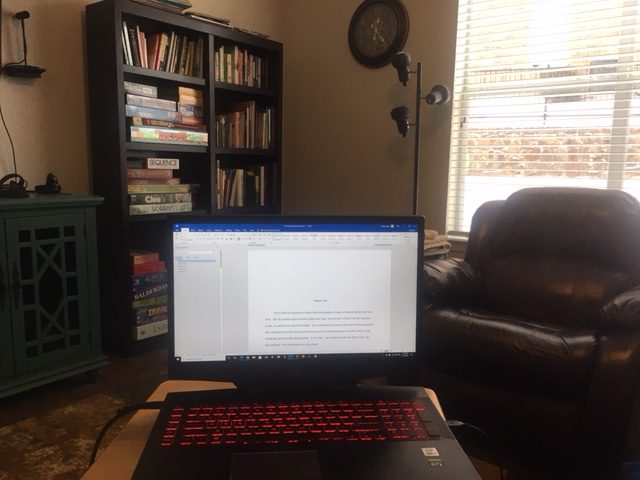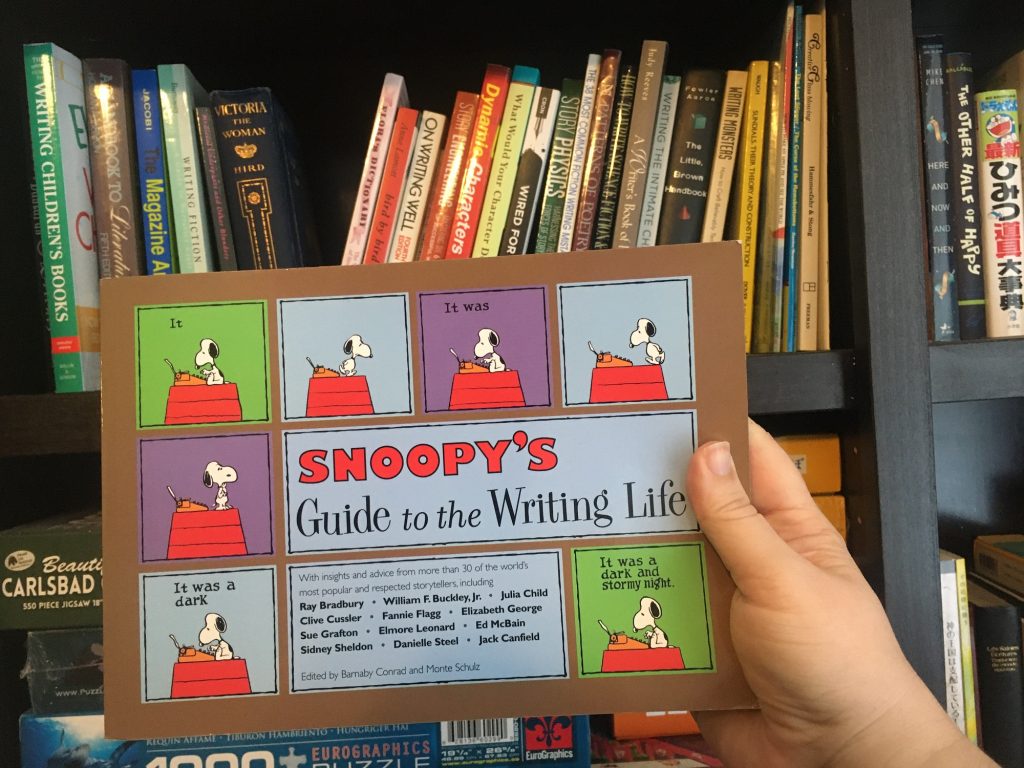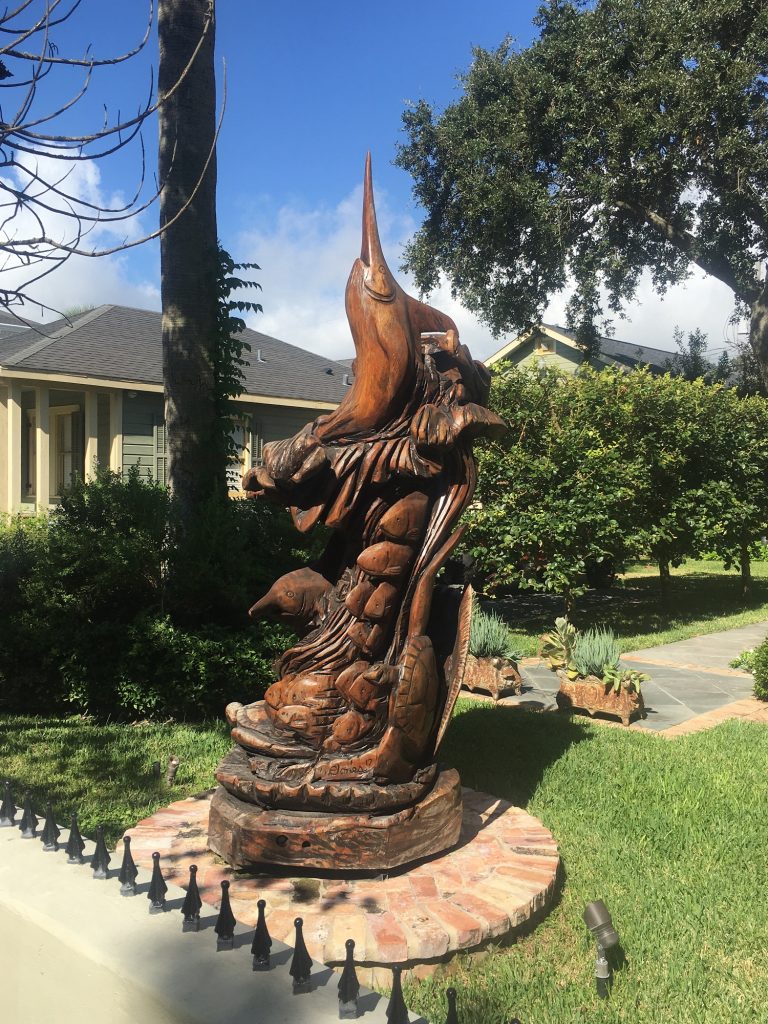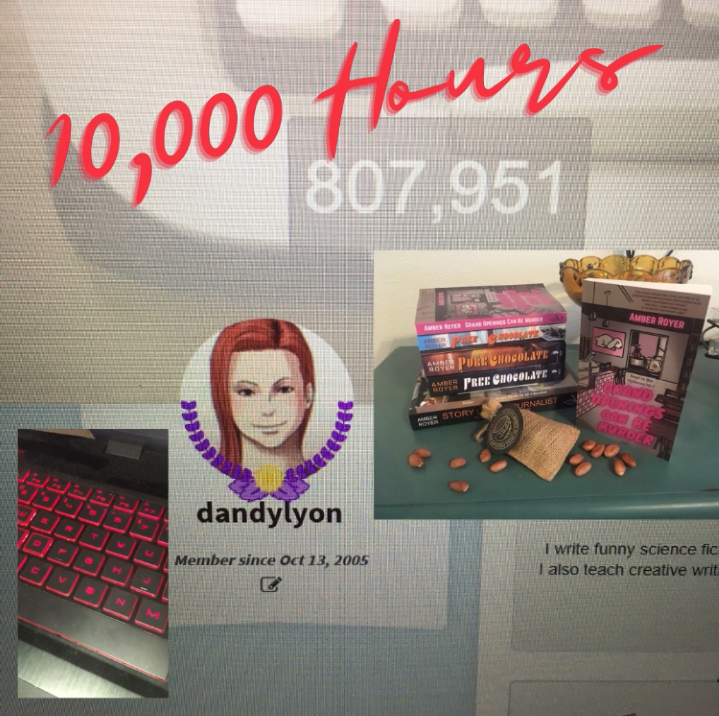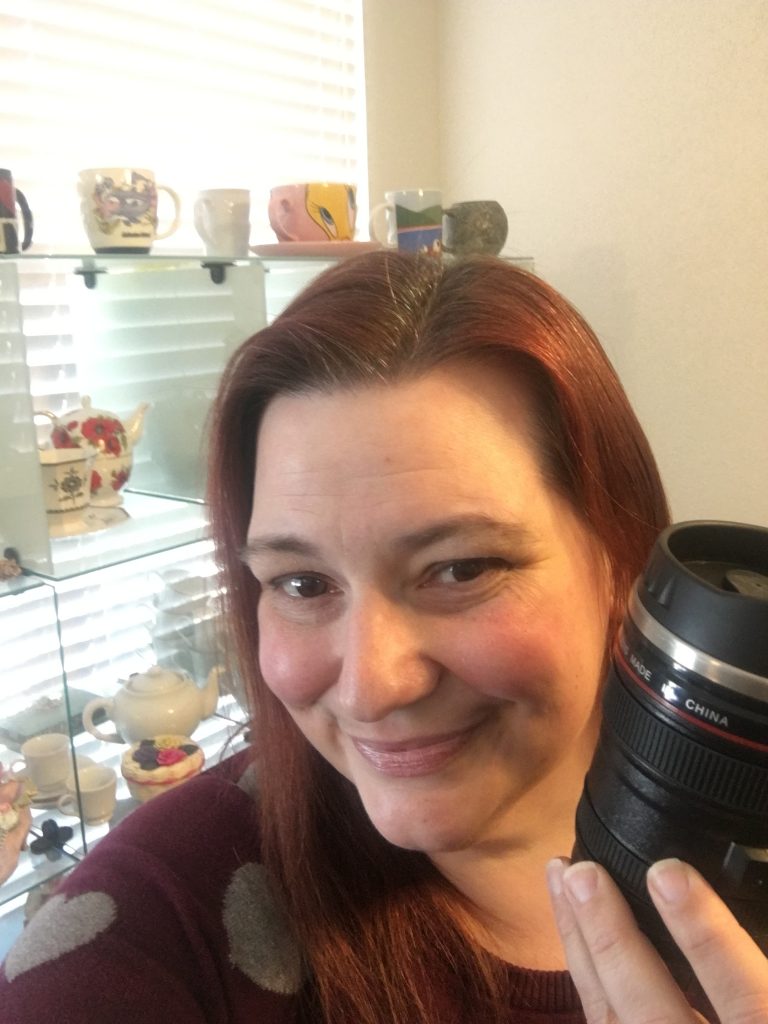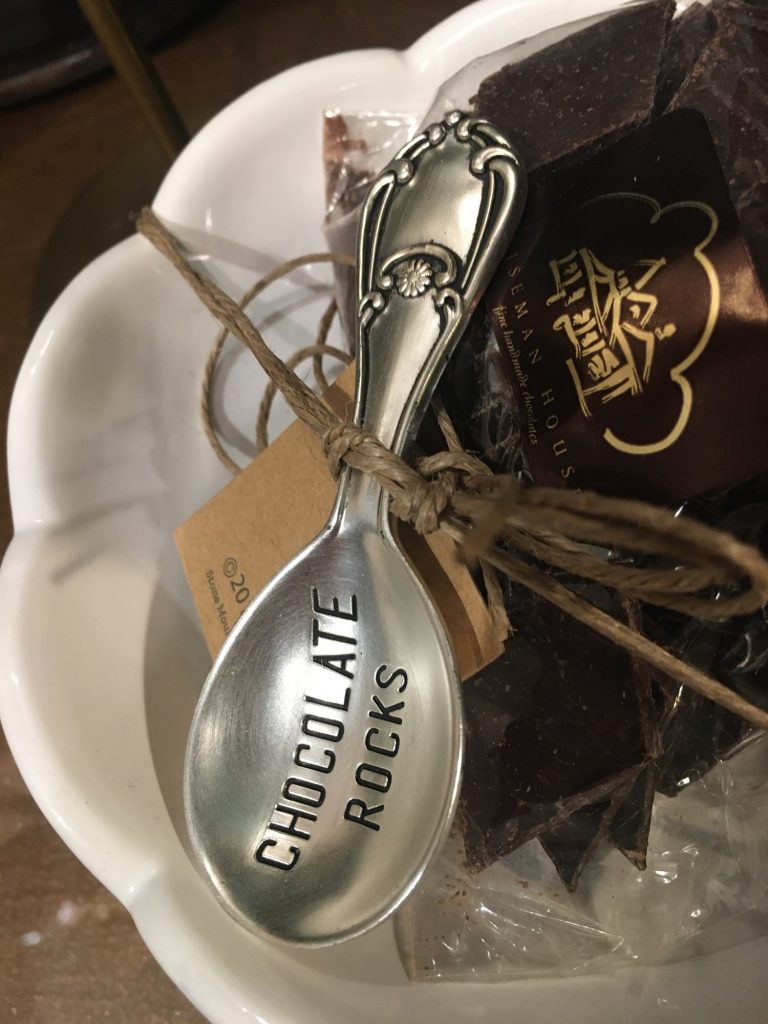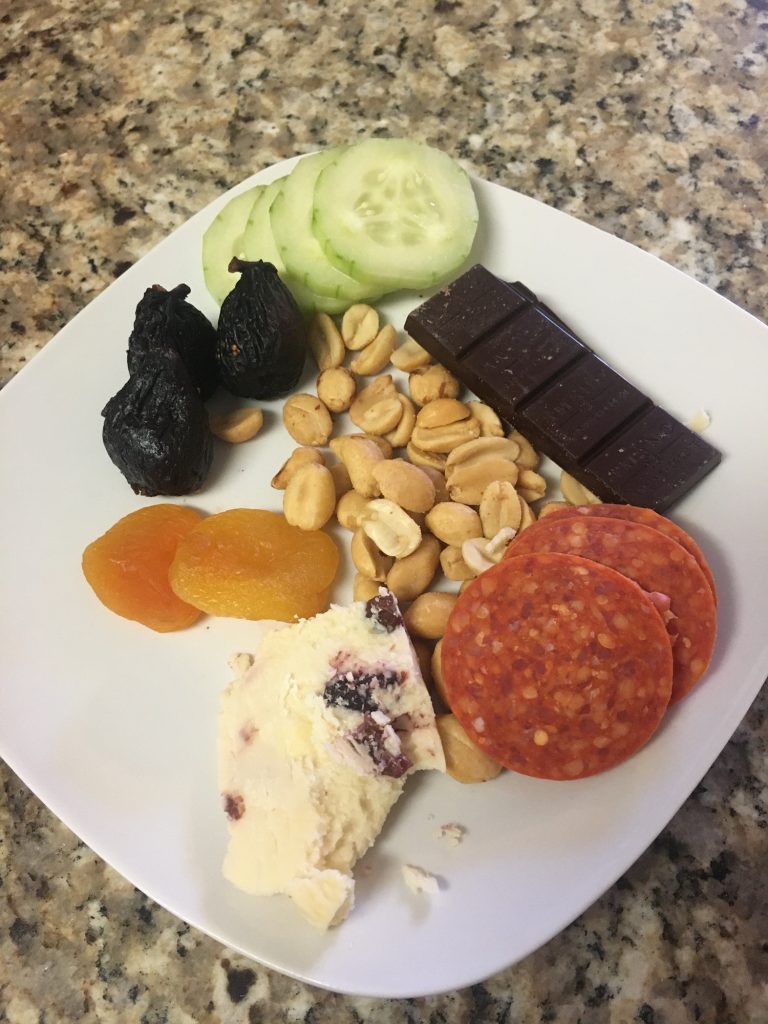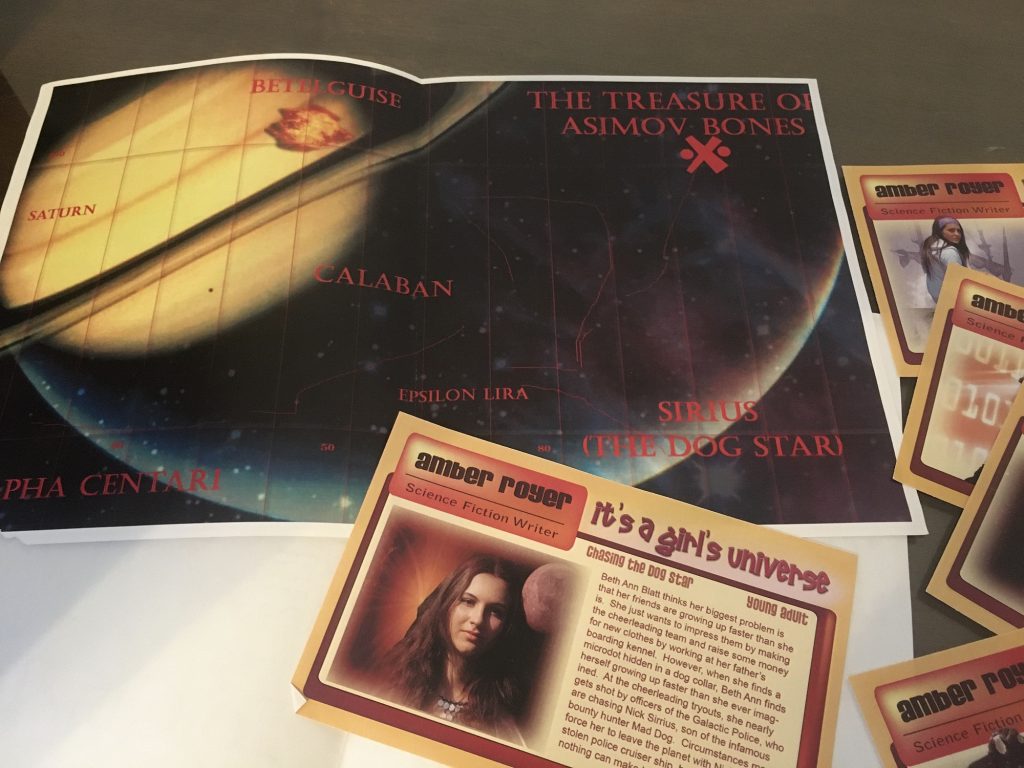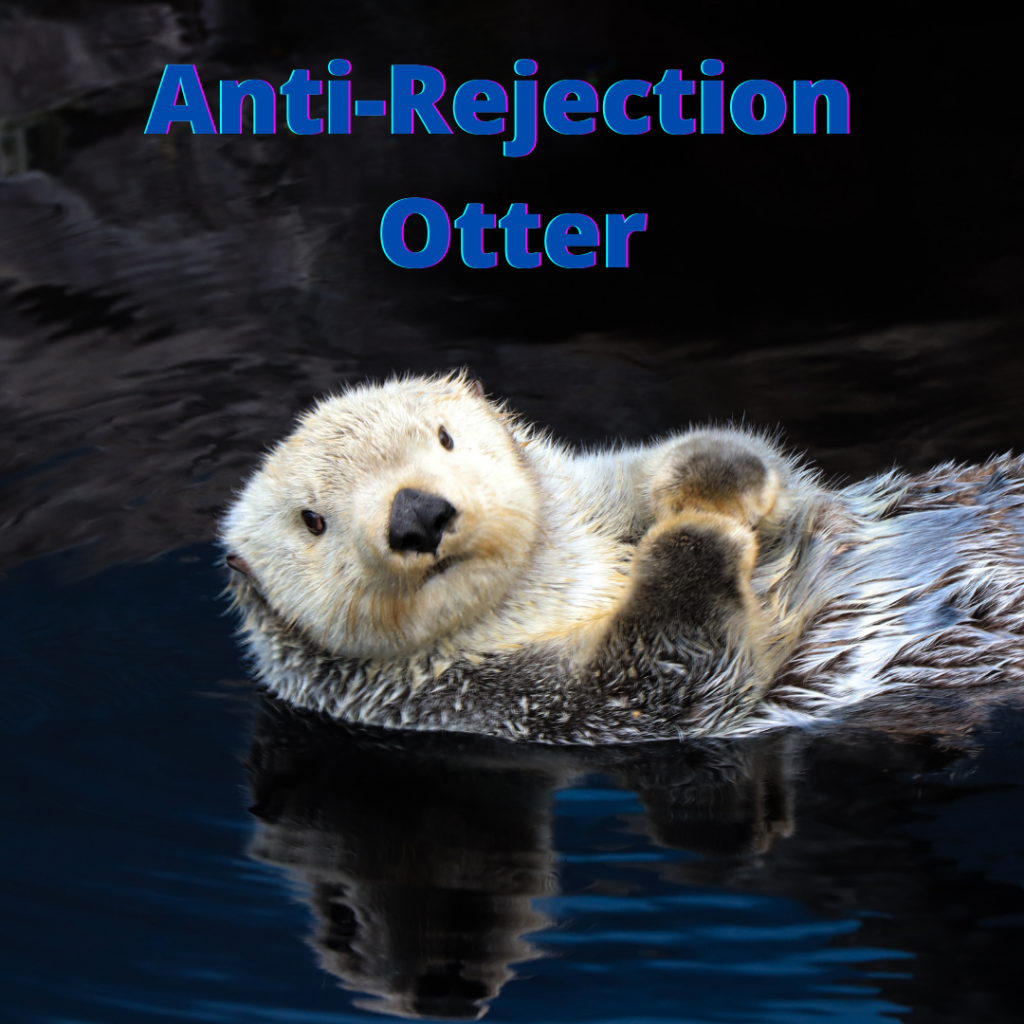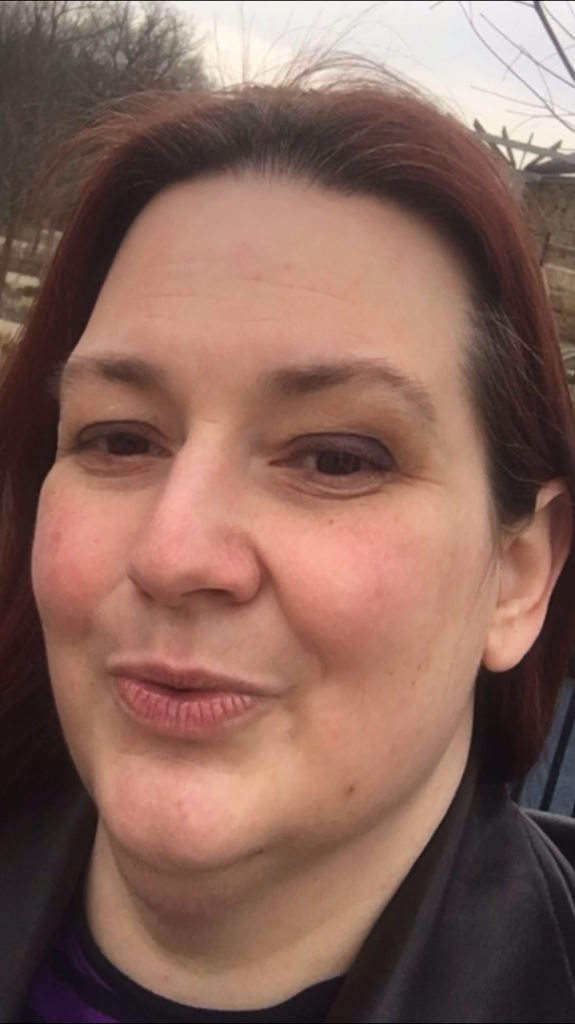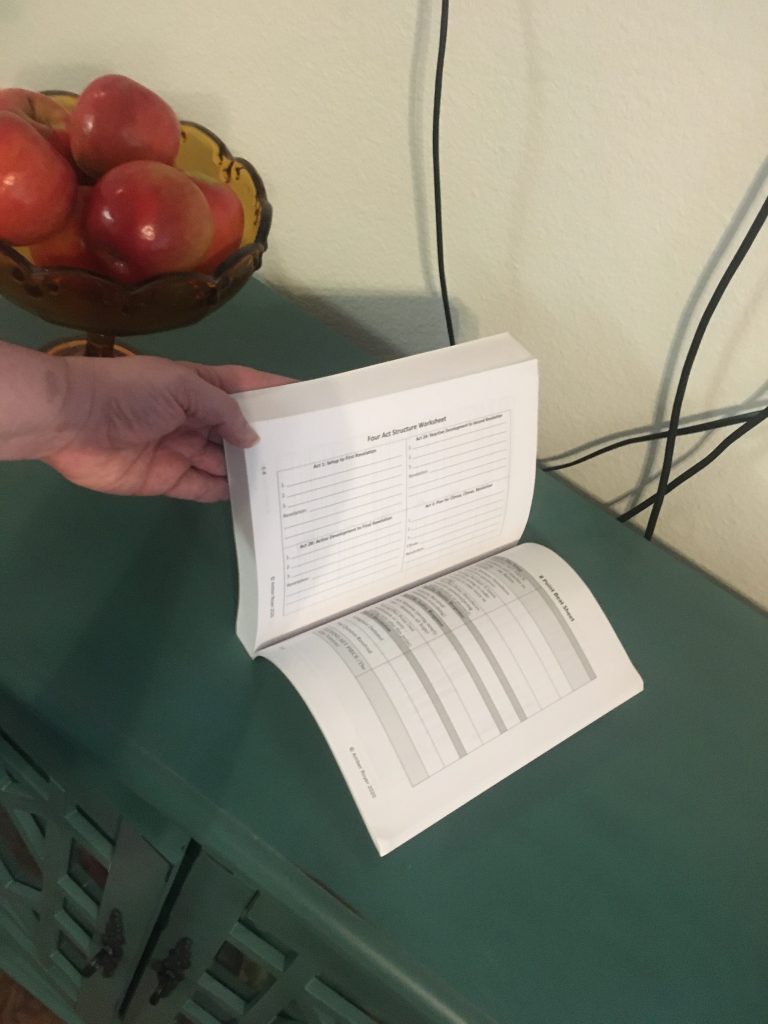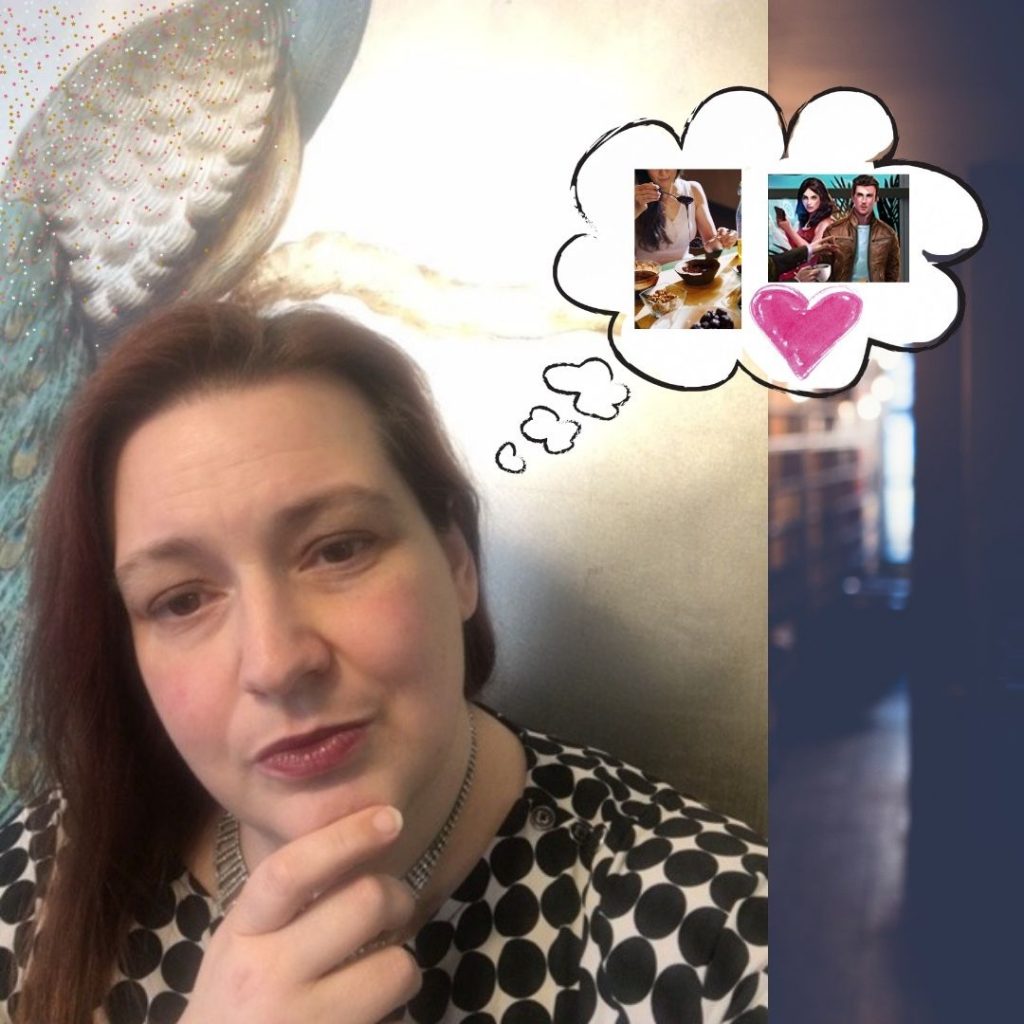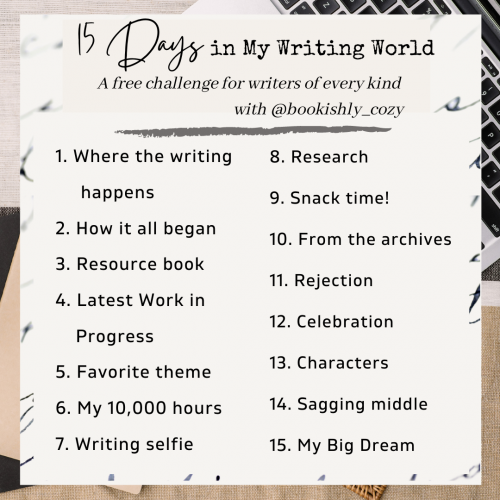
A 15 Day Journey
I decided to do a writing challenge on Instagram, where you were supposed to explore different aspects of your writing practice/writing life. I though the results were interesting, especially the way the prompts built on each other. I know not everyone is on Instagram, so I compiled the Insta segments into one long diary-style post. Today was the last day, so imagine this going back over the past two weeks.
Here we go!!!!!
Here’s my day one for @bookishly_cozy ‘s #15daysinmywritingworld . The prompt is “Where the Writing Happens.” I write on my laptop, which means the writing happens pretty much wherever I am. I miss being able to hang out at my favorite coffee shops and ramen/boba places, but writing from home has advantages—especially when it is snowing outside, like today. Here’s my laptop in my living room. Swipe to see it in the office, on my actual desk.
Day 2 of #15daysinmywritingworld . The prompt is, “How it All Began.” When my parents were here this summer, they brought me some boxes of paper files. In one, I found some short stories and a short novel I wrote in grade school. The novel is about 9 puppies getting adopted by new owners (even then I was trying to put too many characters in a manuscript—still doing it, just ask my agent. 😂😂😂) i also found a letter I had written to Beverly Clearly—though I must not have had the courage to send it, because I still have it. I wanted to tell her I was 10 years old and I was going to be a writer.
I was going through an animal phase when I was writing most of what’s in this folder — horses, dogs, kittens. Most of my stories now still have animals in them, even if in minor roles, and they are still fun characters to write.
@bookishly_cozy
For Day 3 of @bookishly_cozy ‘s #15daysinmywritingworld , the prompt is, “Resource Book.” I have a whole shelf of serious writing reference manuals on the shelf behind the book I chose (and a lot more on my tablet!), but sometimes you just need a positive attitude—and knowing that Snoopy went through all the writer problems before you is strangely encouraging. (The best part of the 2015 Peanuts Movie was the subplot about Snoopy’s work in progress.)
Of course, I couldn’t resist also giving you a shot including my own resource book for writers on the second slide. It is called Story Like a Journalist. (I am the queen of all worksheets—and most of them are in the book.)
Day four of @bookishly_cozy ‘s #15daysinmywritingworld . Today’s Prompt: “Latest Work in Progress.” Y’all know me. I’ve always got several things in different stages. One project I’m still in the design phase of involves Paris in the past. This book is not about chocolate in any way (I know — ignoring my signature brand!) but I’m thinking I can at least give it a nod with a scene involving Parisian chocolat chaud. After all hot chocolate was a big deal in Paris in the 1600s and still influential in the time period I’m writing about, so it feels appropriate.
That kind of research is important, but sometimes it is hard to know what questions to ask. The third slide is a book I recommend for anyone writing their first novel set in a different time or place. It helps to consider what might be different—so you don’t have people eating solid chocolate before 1847 (when it was invented). Still, while my characters are in Paris in 1890, they’re more likely to encounter chocolate in liquid form.
The prompt for Day 5 of #15daysinmywritingworld with @bookishly_cozy is “Favorite Theme.” My books always seem to deal with renewal / redemption /second chances / reinvention / found family / love despite obstacles. I think there’s something about the resilience of human nature underlying all of these.
I’ve shared this pic before. It is one of the tree sculptures in Galveston, TX. I used these sculptures to highlight resilience in my latest release, Grand Openings Can Be Murder. After hurricane Ike drowned a lot of mature trees on the island, instead of removing the stumps, some people decided to turn them into works of art.
I think it says something about resilience that I’m still able to keep up with this challenge while being snowed in in Texas. (We have lights and water—so thankful for that!). But I’m having to be resourceful.
For Day 6 of @bookishly_cozy ‘s #15daysinmywritingworld , the prompt is “My 10,000 Hours.” I have to admit, I wasn’t familiar with the concept, which is why it took me all day to get to this post. The idea: success comes from perseverance. I wholeheartedly concur. 10,000 hours is around 4 years working full time at something. It easily takes that long to become an expert at any art. Hemingway said, “We are all apprentices in a craft where no one ever becomes A master.” Because every writing project has challenges and teaches you something new.
Personally I put in a lot more than 10,000 to get to the point where my writing was publishable, because I was convinced for years that I could get by on raw talent without studying structure or technique.
This year when I did NaNo, I was struck by the sheer amount of words I’d written (shown in the background of the slide)—and that’s just the ones I was counting in November. I have one project I’ve gone back and tinkered with on and off for years that has so many drafts…there’s probably a total 500K in that alone. And it never really got to publishable.
But…other projects did. So enjoy my stack of lovely book covers.
For Day 7 of @bookishly_cozy ‘s #15daysinmywritingworld , the prompt is “Writer Selfie.” You know the quote, “I turn coffee into words?” (Attribution unknown) There is some truth to that. Little routines can help turn on your creativity, or to start a work day. Having these triggers tha tell your brain now is the time to get going are even more important when working from home, on a flexible schedule. So I usually start a writing session with a cup of coffee or tea so that my brain says, “Aha! Hot and comforting! Now it is time to tell stories!”
Here’s a selfie of me with my collection of coffee mugs, teapots, cups, etc. I’m holding my newest travel mug, which looks like a camera lens but is holding a hot beverage in disguise. As a bonus, there are also two slides with coffee quotes I made in @canva . (Second quote attributed to Topher McCulloch).
What habits do you use to signal to yourself that it is time to be creative?
For Day 8 of @bookishly_cozy ‘s #15daysinmywritingworld , the prompt is, “Research.”
I’ve gotten to do a lot of interesting things in the name of research—including sitting in on a tour/seminar with incoming graduate students in astrophysics (wayyyyy above my knowledge level!). But my point is—no matter what you need to know for a book, you can find an expert who’s passionate and willing to share information—even if they have to simplify it for you. 😂😂😂 (It helps if you have done your basic research first! And if you are polite/respectful of the expert’s time.)
A major topic in both my sci-fi AND my mysteries has been chocolate. So many craft chocolate makers and chocolatiers have shared info with me over the past few years. And there is so much to know about chocolate’s history, agriculture, and how to process/work with it. The experts with this knowledge have all been so kind!
The photos in this post were taken at @wisemanhouse in Hico Texas. Kevin—who owns it—is one of the folks who have been kind enough to share knowledge. His company does AWESOME confections (try their peanut butter malt balls, or the toffee)—and they carry chocolate from some of my favorite bean-to-bar makers (pictured: @amanochocolate and @frenchbroadchocolate ).
Also, I find that wherever @vachtra and I travel, we learn something that eventually winds up in my work, even when a trip isn’t actively about research. A lot of stuff we learned about sea turtles on a shore excursion in Mexico are popping up in the manuscript for the second Bean to Bar mystery now, even though that trip was over a decade ago. We often visit museums, observatories and natural places just to learn something. (Who else would have taken the time on a trip to Tokyo to visit the Tokyo Metro Museum—that info hasn’t found its way into a story yet, but someday it might).
For Day 9 of @bookishly_cozy ‘s #15daysinmywritingworld , the prompt is, “Snack Time!”
I like to make myself little snack plates that are kind of like mini cheese boards. Usually there’s fresh fruit involved (after this past week THAT’s another story) but I still have dried on hand. Nuts, cheese … whatever sounds good at the time. And then I often add a piece of dark chocolate. Sometimes I simplify it and just do nuts and chocolate or fruit and yogurt.
Honestly, I’ll eat whatever is handy when my brain is in writing mode, so I try to make sure and balance my (occasionally decadent! 😋🥓🍫🧁🍙🥐) snacks with healthy choices—I ❤️ raw cucumber, bell pepper strips, daikon salads, etc. 💕💕🍓🫐🍎🥒🥦🫑🥙🥙🥙
What about you guys???
For Day 10 of @bookishly_cozy ‘s #15daysinmywritingworld , the prompt is “From the Archive.” She asked to see a blast from writing project past.
Here’s a treasure map I made for my first FOREVER UNPUBLISHED sci-fi manuscript, Chasing the Dog Star. I haven’t opened this archive folder in like a decade and a half! There were some part of Beth Ann’s story that I’m still proud of. It showed enough potential to place in contests and get me meetings with a couple of publishing professionals. I was in my early 20s at the time. I took a loooooong, meandering path to publication after that, but the early boost of confidence told me I was on the right track.
There was a lot of joy in writing Chasing the Dog Star, without any of the expectations that come with serious plans for publication and the knocks life has brought along the years. I’d like to recapture some of that optimism in my writing practice. Maybe I should re-read that manuscript (as cringe-barassing as it is) to reminisce.
For Day 11 of @bookishly_cozy ‘s #15daysinmywritingworld challenge, the prompt is, “Rejection.”
As several other writers doing the challenge have said, rejection is part of the process. You learn from people you can trust/who want you to succeed/see glimmers of potential in your work telling you to work harder. The key is divorcing rejection of your work from your self-worth. That can be hard to do when you’re new—or even now, when it’s a particularly personal piece of writing. You have to remind yourself that writing is a business and what you’re selling is a product and if it isn’t right for the market or for the moment—that doesn’t mean there wasn’t value to you in making it.
When rejection feels personal, you need coping mechanisms. One of mine is scrolling through cute animal pics. (For those of you who need it, here’s a collection of anti-rejection animals — they’re stock photos from @canva — I dare you to look through all of them and not feel better). People will support you through rejection if you let them—but sometimes you have to be very specific about what you need (otherwise you can end up with awkward moments when your friends misjudge the type of emotional support you need). I’ve told my agent to send kitten pics to get me through hard moments. And I’ve asked friends to send pics of their pets. Because when faced with rejection (or even taking a creative risk which could potentially lead to rejection), I personally need positivity over analysis of the scale of the risk or denial of the rejection. Everybody’s different. I also accept hug gif-s, virtual coffee (or real coffee, let’s be honest) and cupcake emojis—as well as occasional dad-jokes and memes.
Which of my anti-rejection animals helps you the most?
For Day 12 of @bookishly_cozy ‘s #15daysinmywritingworld , the prompt is, “Celebrate!”
I’m a kinesthetic learner (I learn best by doing instead of watching, or attaching movement to a concept. So when I celebrate, I dance or bounce—or just MOVE. (I also take little dance breaks when I’ve been sitting at the computer too long.)
You can celebrate little things—like finishing a chapter or coming up with an AWESOME plot twist. To me, that’s better than NOT having joy until you reach some lofty milestone. And it helps to celebrate the accomplishments of other people in my life, even if they seem like small things. You never know when someone is really in need of a boost!
For Day 13 of @bookishly_cozy ‘s #15daysinmywritingworld , the prompt is, “Characters.”
The way an author feels about the story’s protagonist will make a big difference in whether readers connect to that character of not. You need to balance out the traits so that the character has flaws, but also things that you admire/relate to you as you write her. If you don’t have warmth towards your protagonist readers will wonder what is wrong with this person, that even the author is keeping her at arm’s length.
All my protagonists have something in common with me, either psychologically or preferences-wise – but also pieces that are made up of qualities borrowed from friends, or from observation, or from other characters I’ve read or watched and loved. In writing Grand Openings Can Be Murder, I have a recently widowed amateur sleuth who has come home to Texas to start a craft chocolate company. I’m from Texas, which makes this an easier piece to write. And there are a number of areas where I find Felicity relatable.
1—She loves animals just as much as I do. – Felicity has a lop-eared pet rabbit for a pet. She has a soft spot for animals in general, so expect more animal cameos as the series progresses.
2—She loves to travel just as much as I do. – Felicity keeps a box of maps – places she’s been and places she wants to go.
3—She loves books just as much as I do. – Felicity finds a first edition by one of her favorite authors – only the books may be a bit more than she bargained for.
4—She loves feeding other people just as much as I do. – Felicity wants her shop to be a place where people come for something that makes them happy – in this case chocolate.
5—She loves Cajun food just as much as I do. – Felicity has a Cajun side to her family, and she lives right on the Gulf.
6—She loves the beach as much as I do. – Felicity has always lived somewhere coastal.
7—She loves coffee as much as I do. – Obviously.
8—She loves spa days as much as I do. – Of course, I won’t allow her much time for that while she’s solving a murder.
For Day 14 of @bookishly_cozy ‘s #15daysinmywritingworld , the prompt is, “The Sagging Middle.”
This refers to the problem many writers face once they get into a project. You know, the beginning is easy. You have characters to get to know, an intriguing idea you want to explore….and maybe you have an inkling of how it ends—but writing the middle is HARD. As a writing instructor, it seems the magic number is 2,000. I’ve had so many students get through 2,000 thousand words or so. Then the new wears off and the scope of the work ahead kicks in.
The solution: a workable plan for completing the book. You guys know I’m a super mega planner—but a lot of my early manuscripts were written completely on the fly. Not only did I get stuck in the sagging middle—I’d latch onto the first idea that led me out of it. This resulted in manuscripts the flitted in a number of different directions, instead of progressing coherently. I would have publishing professionals show interest in the opening chapters—and then quickly say no to the mess that was the middle of the manuscript. I learned the importance of structure the hard way. That’s why when I put together my Story Like a Journalist Workbook to support my classes, a fifth of it is devoted to WHY=Plot and Theme. People’s creative processes work differently, so I included different plotting models, with different ways to look at the beginning and the end to reverse engineer what actually belongs in the middle.
Novels are about development and growth. Characters need to learn lessons and have setbacks along the way in order to be able to arc (the protagonist HAS to arc for the reader to achieve catharsis and the theme to emotionally impact the reader). Intentionally designing those lessons allows you to focus on the impact as you write, creating even more powerful work. You don’t have to have a detailed description, if that’s not your thing. (I like having a detailed plan, but some writers feel this hamstrings their creativity.). Just knowing the big emotional beats can be enough for the novel to be coherent while allowing yourself surprises along the way.
For Day 15 of @bookishly_cozy ‘s #15daysinmywritingworld , the prompt is, “My Big Dream.”
This one was hard for me. I think of writing more as a job than a dream. My big hope is that lots of people get to meet Bo and Brill and Chestla and Frank, and Felicity and her aunt and her friends and fall in love with reading them the same way I did writing them. I want to keep writing characters readers love, that my friends connect with, that my husband laughs out loud and cheers for.
If you want to help a writer (me or anyone else whose work you love) achieve her goals (a.k.a reach her dreams) there are things you can do.
Number One: Review her books. You probably don’t realize how much impact positive reviews have on reaching new readers, or on getting the book better positioned with retailers. You don’t even have to say much — a star ranking and a kind sentence or two can make a writer’s day.
2. Talk about her books. Signal boost her books on social media. Draw fan art. Think of other ways to help her reach new readers. (I’m still waiting for the day when someone sends me a link to fan art for the Chocoverse. Several people have asked if there are images of what the non-hunanish aliens look like. Just saying. 😂). After all, how will people like a writer’s work if they haven’t heard about it?
3. Request her books at your local library. Even if you’ve already bought a copy. If the library acquires it, she’ll get readers who might not otherwise have been able to afford a copy.
Even if a writer isn’t published yet, you can still show support.
1. Follow her on social media. Those numbers show she’s building a platform, which can make a difference later.
2. Offer a listening ear. Rejection can be tough. Learning the craft can be tough. Life in general can be tough. It’s a bad idea for writers to complain on-line, so even if you’re not a writer, you can be that friend who understands.
3. Be honest. If you agree to give a writer your opinion—on a character name, a story, her website, whatever—trying to spare her feelings is doing her a disservice. Don’t be that friend who lets their friend go into a job interview with spinach In her teeth.


